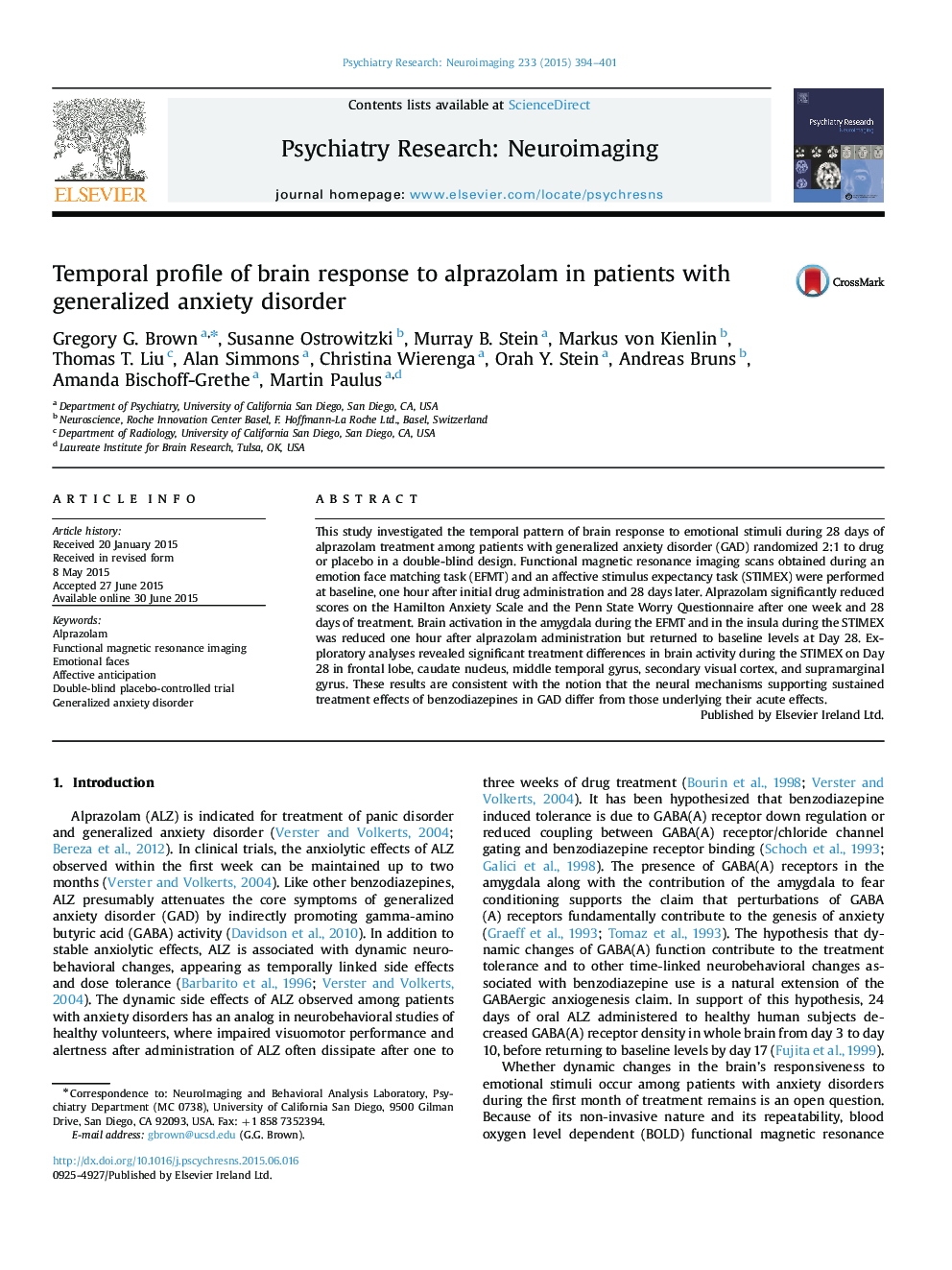| Article ID | Journal | Published Year | Pages | File Type |
|---|---|---|---|---|
| 334728 | Psychiatry Research: Neuroimaging | 2015 | 8 Pages |
•Relative to placebo ALZ reduced reported anxiety after 7 and 28 days of treatment.•Activation in the amygdala and the insula reduced one hour after ALZ administration.•Amygdala and insula activation returned to baseline levels at Day 28.•Activity in executive and visual regions was reduced at Day 28.•Different brain systems are involved in acute and sustained ALZ treatment of GAD.
This study investigated the temporal pattern of brain response to emotional stimuli during 28 days of alprazolam treatment among patients with generalized anxiety disorder (GAD) randomized 2:1 to drug or placebo in a double-blind design. Functional magnetic resonance imaging scans obtained during an emotion face matching task (EFMT) and an affective stimulus expectancy task (STIMEX) were performed at baseline, one hour after initial drug administration and 28 days later. Alprazolam significantly reduced scores on the Hamilton Anxiety Scale and the Penn State Worry Questionnaire after one week and 28 days of treatment. Brain activation in the amygdala during the EFMT and in the insula during the STIMEX was reduced one hour after alprazolam administration but returned to baseline levels at Day 28. Exploratory analyses revealed significant treatment differences in brain activity during the STIMEX on Day 28 in frontal lobe, caudate nucleus, middle temporal gyrus, secondary visual cortex, and supramarginal gyrus. These results are consistent with the notion that the neural mechanisms supporting sustained treatment effects of benzodiazepines in GAD differ from those underlying their acute effects.
